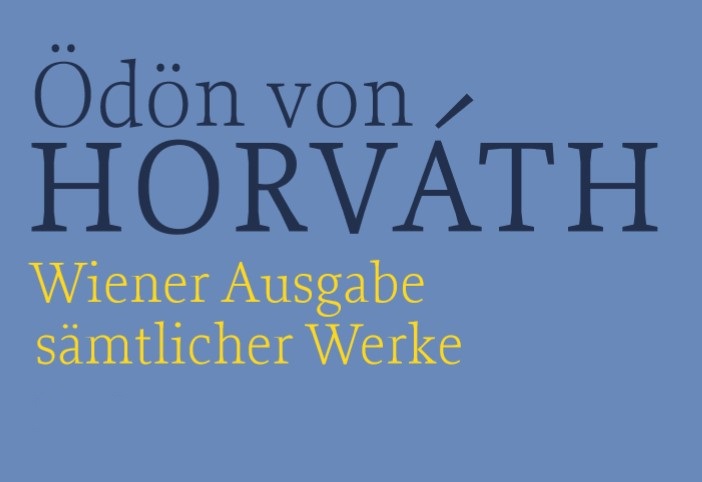Ödön von Horváth: Historical-critical edition
The complete works of Ödön von Horváth (1901-1938) are a historical-critical edition. In nineteen volumes, it includes all of the author's completed and fragmentary works as well as all notebooks, letters and life documents. The edition offers literary and theater studies research a long sought-after, complete and reliable text and source basis for one of the most important and popular representatives of literary modernism.
Digital editions of all of Ödön von Horváth's plays supplement and expand the historical-critical edition with the possibilities of digital humanities. In addition to an interactive reproduction of the drama texts, which have been marked up according to established standards (XML; TEI:P5), the digital edition allows the representation of drama networks and numerous elementary statistical evaluations. The standardized, consistent markup practice also allows comparisons beyond the boundaries of the plays.
The publisher de Gruyter publishes the volumes of the historical-critical edition in book form and as an eBook. In cases where the FWF grants publication funding for selected individual volumes, these volumes are offered as open access publications.

Ödön von Horváth's historical-critical edition has not only met with a great response in literary research, but also in the field of contemporary theater practice. In a widely acclaimed production of Kasimir and Karoline at the Residenztheater in Munich in the fall of 2011, for example, the famous director Frank Castorf referred centrally to the new edition and placed the production process of the text made comprehensible there directly on the stage.
The work on the edition is framed by numerous educational activities: Reclam has published editions of Horváth's most important works(Kasimir und Karoline, Geschichten aus dem Wiener Wald, Jugend ohne Gott, Glaube Liebe Hoffnung, Der ewige Spießer):In workshops and symposia, established researchers and young students are encouraged to engage with the work-genetic edition and the new interpretation possibilities it opens up for Ödön von Horváth's work. In addition, a Horváth handbook, long called for by researchers, was published during the course of the project.